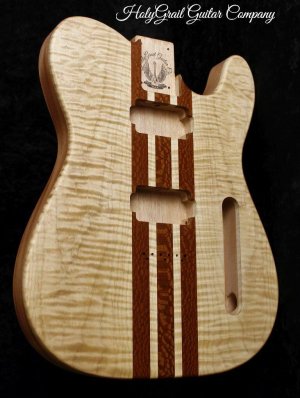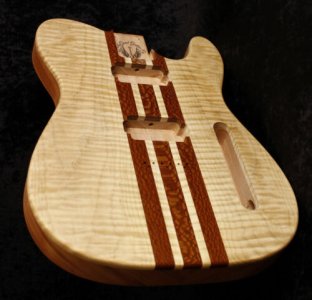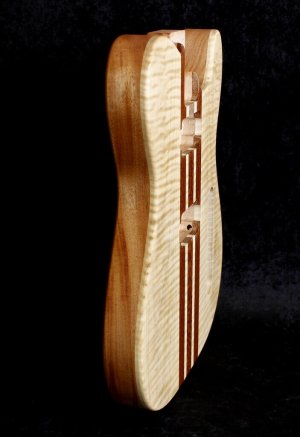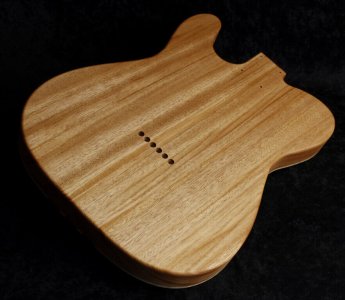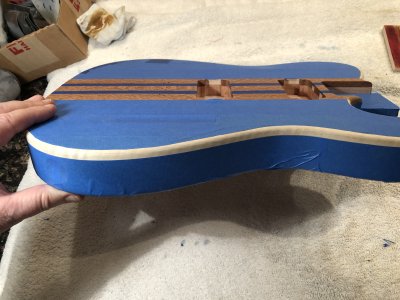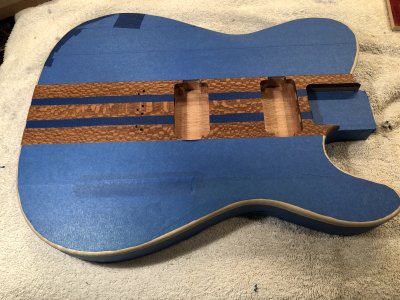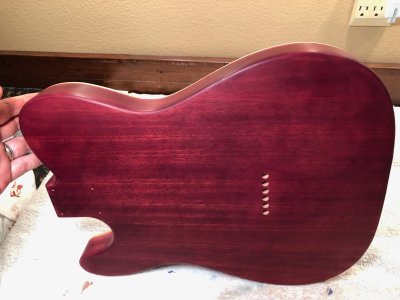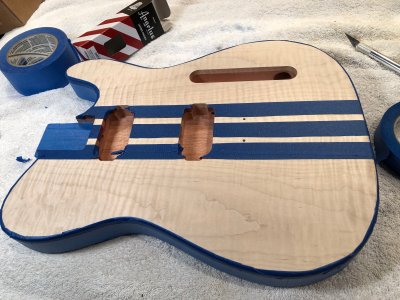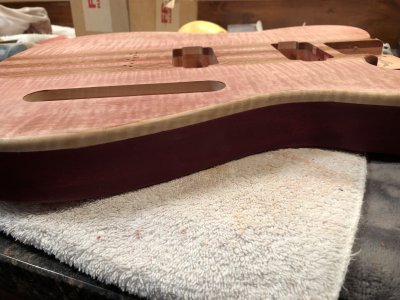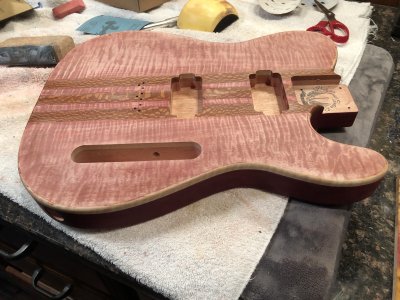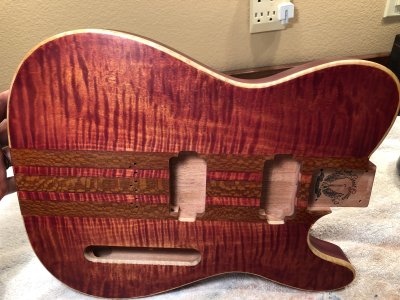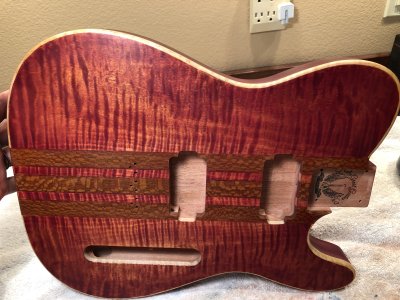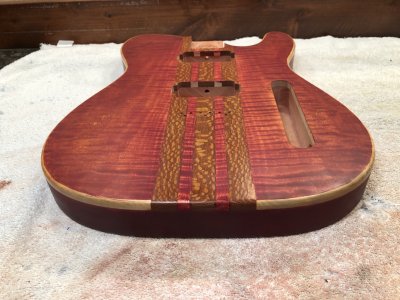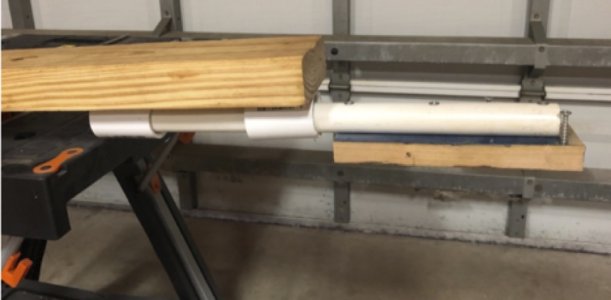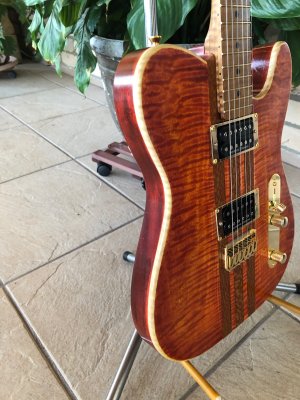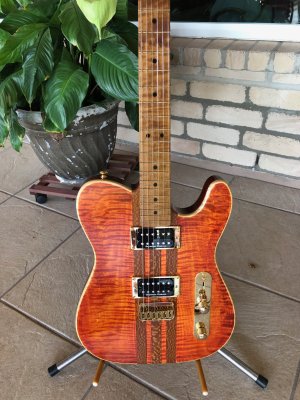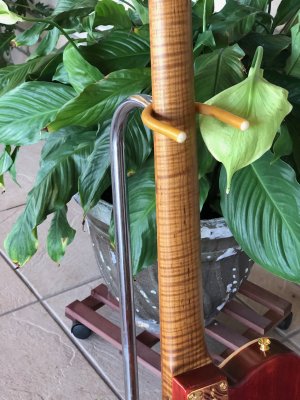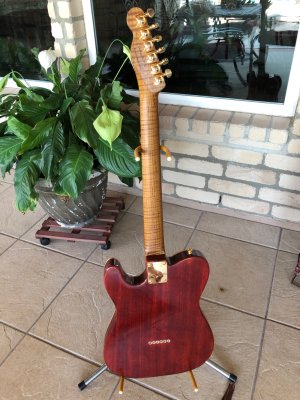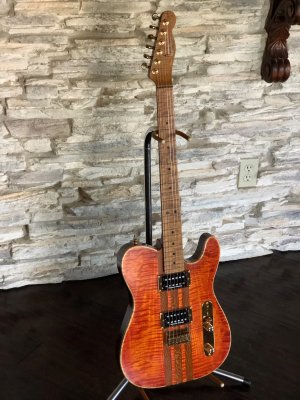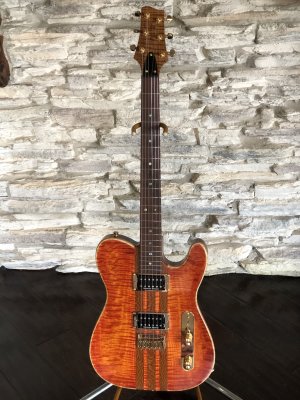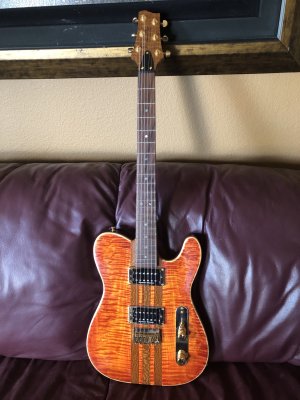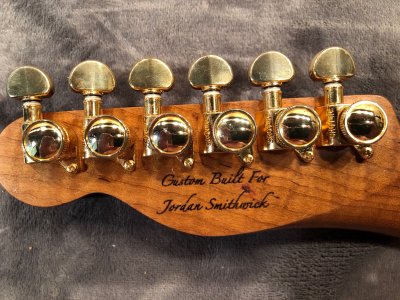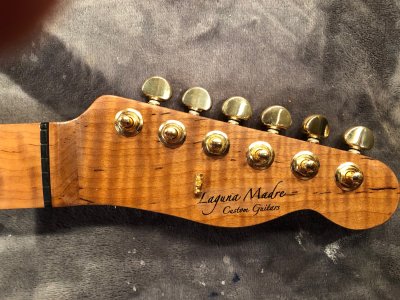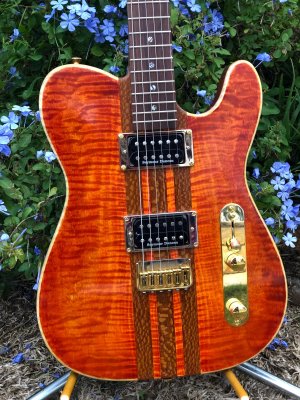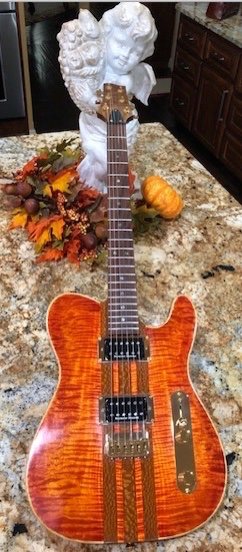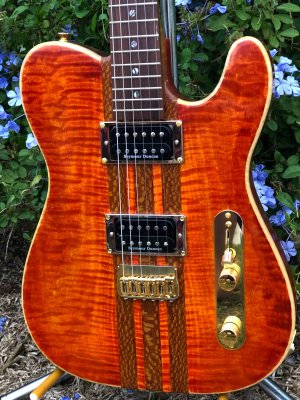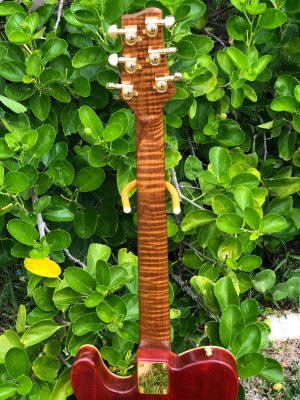Dano
Junior Member
- Messages
- 105
I have two grandsons and I decided to build them each a guitar. I just finished them, so I am going to post a few pics and descriptions of what I did along the way, as best I recall.
The first post was Grandson #1 Telecaster Build – Finished Product. It was my first attempt at an owner finished guitar (other than oil) and it includes some lessons learned in my first attempt. This is the link:
https://www.unofficialwarmoth.com/index.php?topic=30970.0
Now on to the Tele for my other grandson. This body was purchased on eBay and it was approximately 3/8” Flame Maple lamtop on Mahogany. The maple top had some stripes of Leopard Wood running longitudinally through the top. My intent was to pick a color and a pattern that complimented the dark Leopard wood stripes and the Roasted Flame Maple neck.
Here are a few pictures of the guitar body as I received it.
The first post was Grandson #1 Telecaster Build – Finished Product. It was my first attempt at an owner finished guitar (other than oil) and it includes some lessons learned in my first attempt. This is the link:
https://www.unofficialwarmoth.com/index.php?topic=30970.0
Now on to the Tele for my other grandson. This body was purchased on eBay and it was approximately 3/8” Flame Maple lamtop on Mahogany. The maple top had some stripes of Leopard Wood running longitudinally through the top. My intent was to pick a color and a pattern that complimented the dark Leopard wood stripes and the Roasted Flame Maple neck.
Here are a few pictures of the guitar body as I received it.



